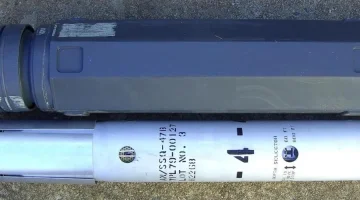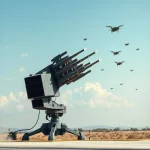- Views: 2K
- Replies: 6

Pune: The Indian Navy is set to significantly bolster its defense capabilities against aerial threats, particularly swarming drones, by introducing high-explosive pre-fragmented (HEPF) shells. These specialized shells, capable of engaging multiple drones within a five-kilometer radius, will be fired from AK-630 Naval guns, a system already integrated into various naval vessels.
Each HEPF shell boasts a 1kg payload capacity and an effective range of five kilometers. Upon detonation, the shell disperses approximately 600 metal shrapnels at a velocity of 850 meters per second, creating a lethal cloud capable of neutralizing multiple drones within its expansive radius.
This new development is particularly relevant considering the recent surge in drone attacks targeting Indian ships in the Gulf of Aden and the Indian Ocean Region. The HEPF shells will offer commanding officers an additional, potent tool to counter these threats, supplementing existing anti-drone systems already in place.
The indigenous development of the HEPF shell is attributed to the Armament Research and Development Establishment (ARDE) laboratory under the Defence Research and Development Organisation (DRDO). Director of ARDE, A Raju, confirmed the handover of production documents to the Naval Armament Inspectorate, paving the way for the Navy to place supply orders with manufacturers based on their operational needs.
Extensive trials conducted in collaboration with the Indian Navy have validated the shell's operational effectiveness, fulfilling desired performance parameters. The Navy played a pivotal role throughout the development process, providing technical inputs and collaborating closely with ARDE to refine the design and ensure its success.


